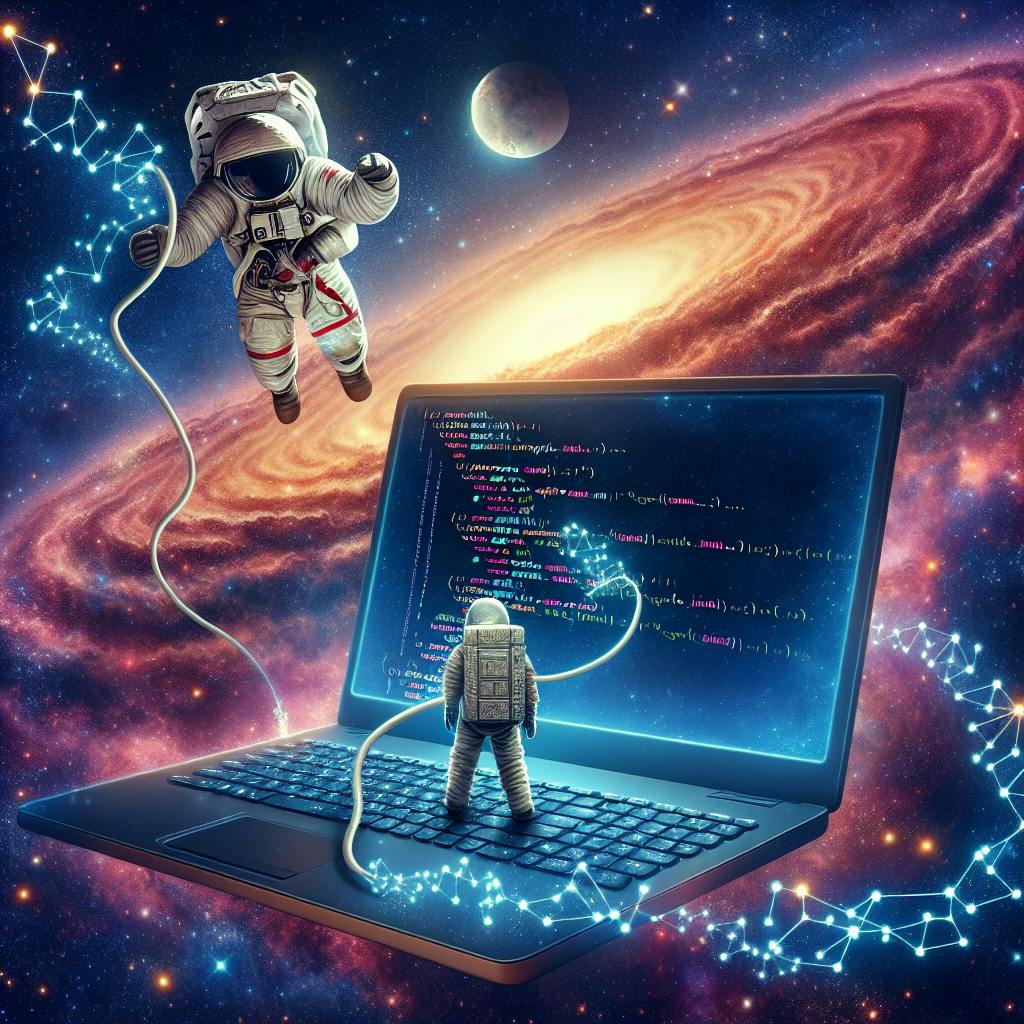Programming
Coding for Beginners: Learn with Interactive Exercises
October 19, 2023
10 min read

Coding for Beginners: Learn with Interactive Exercises
Introduction to Coding for Beginners
Coding is the process of writing instructions in a programming language to create computer software, apps, and websites. As technology becomes more integrated into every industry, coding skills are highly in demand across jobs. With the right guidance, anyone can learn the basics of coding, regardless of their background. This article will provide an interactive introduction to fundamental coding concepts using JavaScript examples tailored for complete beginners. We'll cover the key building blocks like variables, functions, and loops that form the foundation of any programming language. With hands-on practice in a friendly learning environment, you'll gain the skills and confidence to take the first steps on your coding journey. No complex math or advanced computer science degree required!
Choosing Your First Programming Language
When starting out, it helps to learn a beginner-friendly programming language that allows you to focus on core coding principles versus complex syntax. Popular starter languages include:
- Python: Used across data science, machine learning, and web development. Beginner-friendly syntax and many libraries.
- JavaScript: Powers interactive websites and web apps. Integrates with HTML/CSS. Interactive examples.
- Ruby: Clean and readable syntax. Used for web backends and DevOps. Strong community.
- Java: Statically typed and object-oriented. Used for Android and enterprise apps. Lots of jobs.
- C#: Similar to Java. Used for Windows and .NET development. Video game development.
For complete beginners, I recommend learning JavaScript first. It is widely used on the frontend of websites for interactivity, has a friendly community, and allows you to see visual results quickly. The interactive examples on Learn JavaScript are a great way to get started. As you build projects in the browser, you'll understand how JavaScript powers many of the web apps and sites you use every day.
Popular Languages for Web Development
Here is a quick overview of other popular languages used in web development today:
- Python - General purpose language great for backend services and APIs. Easy to read and write.
- Java - Statically typed language for robust backend applications and Android apps.
- PHP - Scripting language well suited for web content management systems like WordPress.
- Ruby - Dynamic language ideal for web frameworks like Ruby on Rails.
- C# - Statically typed language used for ASP.NET web apps.
- Go - Compiled language developed by Google for building fast services.
While you don't need to learn them all now, being aware of these languages will help you understand the broader web development landscape.
Setting Up Your Coding Environment
To start coding, you'll need:
- A text editor like VS Code, Atom, or Sublime Text to write code
- A web browser like Chrome or Firefox to run JavaScript
- The command line on Mac/Linux or PowerShell on Windows
Here are step-by-step guides to get set up for Mac, Windows, and Linux. Alternatively, sites like CodeSandbox provide an online IDE without installing anything.
The interactive lessons on Learn JavaScript include a built-in code editor so you can get started right away. When you're just beginning, it's better to avoid complex IDEs that may overwhelm you.
Learning Programming Basics with JavaScript
Now that you're set up, let's introduce some core programming concepts using simple JavaScript examples:
Variables are named containers that store data in your code, like a number or text. They help you track values as your program runs:
let username = "Mary"; // Declare and initialize the variable
username = "John"; // Reassign the value
Data types determine what kind of data can be stored in a variable. JavaScript has number, string, boolean, and more:
let age = 30; // Number
let name = "Mary"; // String
let isLoggedIn = true; // Boolean (true/false)
Functions are reusable blocks of code that perform a specific task:
function greetUser() {
console.log("Welcome back!");
}
greetUser(); // Call the function
Conditionals control program flow based on true/false conditions:
let age = 17;
if (age >= 18) {
console.log("You can vote!");
} else {
console.log("You're too young to vote.");
}
Loops repeat a block of code until a condition is met:
for (let i = 0; i < 5; i++) {
console.log("Iterating...", i);
}
Check out Learn JavaScript's lessons for interactive examples explaining these core concepts and more. Take it slowly, repeat the basics, and practice with the built-in code challenges.
Practicing Your Skills with Coding Challenges
Once you have a grasp of programming fundamentals, practicing regularly is crucial for honing your skills. Sites like freeCodeCamp and Codewars offer beginner-friendly coding challenges to solve problems and apply your knowledge.
Learn JavaScript provides an extensive curriculum of practical coding challenges organized by difficulty level. You'll solve real-world problems by writing code in the interactive code editor. Start with basic challenges involving variables, conditionals, and loops. Then move on to arrays, objects, algorithms like FizzBuzz and Fibonacci, and more.
Always try challenges just outside your comfort zone and don't get discouraged by failure. Learning how to debug errors and solve tricky problems is all part of the journey. View coding challenges as fun puzzles versus chores.
Building Your First Web Application
Once comfortable with fundamentals, it's time to start building! Web applications use HTML for content, CSS for styling, and JavaScript to make them interactive. Here's an overview of the process:
- Design a simple layout and user flow. Don't overcomplicate it initially.
- Write HTML to structure the content and text.
- Style with CSS to make it visually appealing.
- Add interactivity with JavaScript event handling and DOM manipulation.
- Test extensively and debug issues.
- Polish the UI/UX details.
- Deploy online so others can access it.
Check out project tutorial articles on Learn JavaScript like building a calculator, todo list, quiz app, weather dashboard and more. Use starter templates to focus your energy on the JavaScript code.
Building even simple projects reinforces your skills and helps you think through real-world programming problems. You'll encounter bugs and issues along the way, but that's part of the process!
Leveling Up Your Skills After the Basics
Once comfortable with core concepts like variables, functions, and loops, it's time to dive into more advanced JavaScript topics:
- Objects bundle data and functionality together into reusable structures.
- Classes implement reusable object "blueprints" using prototypal inheritance.
- Arrays store ordered data lists and have many helper methods.
- Asynchronous code like promises and async/await manages non-blocking operations.
- Databases store and query data like MongoDB and SQL databases.
- APIs allow services to communicate with each other over the network.
- Frameworks like React provide structures for building robust applications.
- npm packages enable you to reuse JavaScript libraries developed by the community.
Check out Learn JavaScript's intermediate courses for structured learning after getting your basics down. Keep practicing new concepts through coding challenges and projects to continually expand your skills.
Debugging Errors and Problems in Your Code
While coding, you'll inevitably run into bugs and errors. Common types include:
- Syntax errors from typos or invalid code
- Logical errors where the code runs but has unexpected behavior
- Runtime errors that happen while the program executes
Use console.log() statements to print variable values and debug behavior. Browser developer tools help inspect network requests, console output, sources, and breakpoints.
When stuck on a bug, explain your code aloud or ask a rubber duck. Reading the exact error message will usually point to the issue. Take your time debugging - don't rush it!
For stepping through code, Learn JavaScript provides a debugger statement to pause execution and inspect variables in real-time.
Remember that bugs are just part of the learning process. Don't let them discourage you!
Improving Your Programming Logic Skills
In addition to language syntax, solid programming logic is crucial for structuring code and algorithms properly. Start developing this skill by:
- Playing logic games and puzzle apps to improve critical thinking.
- Writing comments and pseudo-code before diving into complex code.
- Diagramming the flow of your programs using flowcharts.
- Breaking complex problems down into smaller, more manageable pieces.
Practice logic challenges on Learn JavaScript involving problem decomposition, pattern matching, and sequence ordering. Taking the time to think problems through will make you a stronger coder.
Exploring Popular JavaScript Frameworks and Libraries
Once comfortable with pure JavaScript, exploring frameworks like React, Angular, and Vue can help structure larger web applications:
- React - Component-based UI library developed by Facebook.
- Angular - Full MVC framework for building complex, data-driven apps.
- Vue - Progressive framework for reactive UIs with a gentle learning curve.
There are also many JavaScript libraries for tasks like DOM manipulation, charts, and animations:
- jQuery - Easy DOM manipulation and AJAX requests.
- D3.js - Data visualization and charting.
- Three.js - 3D animations and graphics.
I recommend getting very comfortable with pure JavaScript before jumping into frameworks. Learn their pros and cons, and only use them where they provide clear benefit.
Collaborating with Other Developers
Writing code in isolation can be difficult. Collaborating with other programmers allows you to share knowledge, get feedback, and stay motivated. Here are some tips:
- Attend local Meetup events and workshops related to JavaScript.
- Participate in hackathons to build apps alongside other programmers.
- Contribute to open source projects by fixing bugs and adding features.
- Share your code on GitHub to get feedback from developers worldwide.
- However, always understand code you copy/paste before using it.
The key is engaging meaningfully with other developers, not just copying their work. We all grow faster when we work together!
Landing Your First Developer Job
Once you have a solid grasp of JavaScript, here are some next steps to land your first dev job:
- Build a portfolio of projects showcasing your skills.
- Create an account on LinkedIn and GitHub to build your profile.
- Network online and in-person with local JavaScript meetups.
- Consider volunteering for nonprofits to get experience.
- Prepare for technical interviews by practicing questions and exercises.
Check out Learn JavaScript's career guides for resume help, interview tips, and job search advice tailored to JavaScript developers.
With consistent effort put into learning, projects, and networking, you can launch your dev career!
Start Your Coding Journey The Right Way
Learning to code does not happen overnight, but with the right approach, anyone can pick up programming fundamentals and level up their skills over time. Here are a few key tips:
- Start by getting set up with access to learning materials and tools. Don't get overwhelmed with complex IDEs too early.
- Learn core concepts like variables, functions, loops with interactive examples at your own pace.
- Practice regularly with coding challenges and exercises to reinforce and test your knowledge.
- Work on building simple projects to apply coding skills to real-world problems.
- Expand your knowledge and experience over time by collaborating and exploring new technologies.
- Most importantly, be patient with yourself. Learning to code takes consistent effort and perseverance.
For structured lessons, challenges, and projects, check out Learn JavaScript and get started with real coding in your browser today! The interactive tutorials are designed for coding beginners to learn at their own pace.







